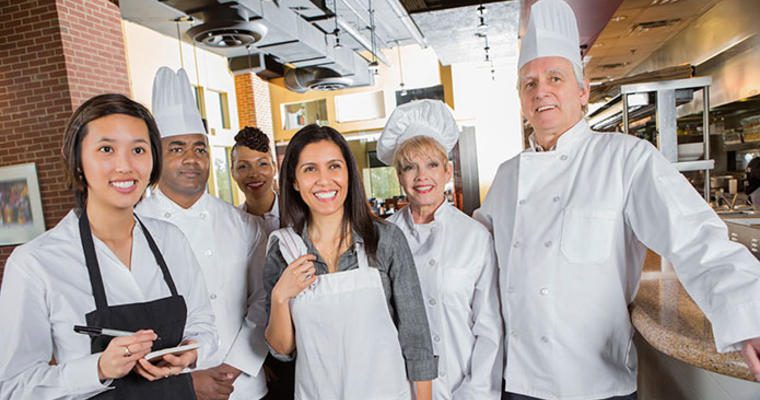Today’s restaurant workforce likely includes everyone from a 58-year-old supervisor to a 41-year-old chef to a 30-something dining-room server. And don’t forget those who bus tables and expedite food orders. They’re just 20.
The generational cross-section of workers can easily span four decades and an equal number of generations, with people of all ages serving in both supervisory and subordinate roles. From a management standpoint, this creates challenges when it comes to getting everyone working as a team. People from different generations have different ideas about what work means, and different expectations about everything from training to treatment to advancement and compensation.
In other words, there’s no one-size-fits-all approach to staff management. Indeed, recognizing and understanding generational cultural differences is a big part of the management challenge today. So says Dan Longton, President and CEO of Florida-based TraitSet, a workforce-management service provider.
To facilitate inter-generational harmony, Longton advises, remember that all employees are of value to the operation—otherwise, they wouldn’t have been hired in the first place. You don’t want to lose any of them to turnover because replacement is very expensive and time-consuming.
“Within every generation there are people who have a strong work ethic, great integrity, and abundant skills,” Longton says. “Employers need to conduct assessments and develop training to make sure everyone fits the operation’s needs and, ultimately, the guests’ needs.”
Working to understand employees’ needs, training them, and building on their strengths can lead to higher satisfaction scores from guests. And that results in return visits, word-of-mouth advertising, and an overall better image. This benefits the operation and creates a stronger work environment for the team.
Dustin Windau, a Gordon Food Service Toledo West Sales Manager who is a former Executive Chef at Great Wolf Lodge in Sandusky, Ohio, reminds operators of the importance of teamwork.
“You must be a team every day, no matter what generation a staff member belongs to,” Windau says. “Recap every shift and lift up the team for things they did correctly, and, in a nice way, point out things that could have been better.”
Facilitate Multigenerational Understanding
While certain defining characteristics are true for each generation, Longton warns against stereotyping individuals. Not all boomers are work-focused; not all Gen Xers are slackers, etc. Instead, he suggests, use these descriptions as starting points for understanding and addressing the differences and values of each generation.
For example, Longton says it’s important for managers to know that boomers expect face-to-face communication with the boss instead of an email (so make a point of speaking to them directly); that Gen X looks for a work-life balance (so establish flex-time with them whenever possible); that millennials need space to show their strengths (so practice a “hands-off” management style with them as much as you can); and that Gen Z expects to be able to check texts or social media (so set workplace policies that let them know when they can, such as during breaks).
“Being the boss who ‘gets it’ is very important,” Longton explains. “Accepting and understanding generational differences allows you to stay ahead.”
Windau’s experience validates this. “Every employee is an individual—learning and thinking individually—so motivating and communicating needs to be done individually to build an effective team.
Help Find the Best Fit for Young Workers
In the team-development sessions that Gordon Food Service Customer Effectiveness Manager Ken Wasco conducts, managers often gripe about millennial workers—“They’re impossible to manage. They get bored so easily. They don’t care the way we used to.”
Rather than throw up their hands in despair, operators need to learn ways to use all of the generational differences to their advantage.
If millennials love working as a team, Wasco says, they will deliver as a team when you set expectations, communicate daily, and offer feedback that keeps everyone focused. And, because younger workers come to the table equipped with a lifetime of hands-on high-tech experience, savvy managers will put those skills to work for the organization.
“Not every millennial is a tech genius, of course,” Wasco says. “But all of them want to be best utilized. You have to get to know millennials personally to figure out their ‘best fit’ in your organization.”
Getting employees to their “best fit” starts with understanding your organization’s culture. That, Wasco points out, means constantly assessing the values and goals of your business.
Tradition may be the very reason diners choose your restaurant. It’s also possible some of those traditions are outdated and in need of change. It’s the organization’s job to know which assets to keep and which ones to change. It’s the manager’s job to get the team to apply those assets.
One way to start this process is to understand those you serve. Workers from one generation, Longton maintains, may have a difficult time appreciating preferences diners from other generations. For example, a young server who seats an older customer at a dimly lit booth may not realize how difficult it is for the customer to read the menu. The older hostess who calls a group of young diners “you guys” may unknowingly be putting them off.
The Role of Role-Playing
To remedy this, Longton advises empathy training. Have your employees put on a pair of sunglasses and try to read the menu. Have them consider how they would like to be addressed if they were the diners. “Empathy is recognizing how a person feels and responding to that,” Longton says. “We need to remind ourselves and our employees of this all the time.”
Empathy facilitates better manager-employee relationships. Longton uses role-playing in multigenerational classroom training, to emphasize the point. Have a millennial play the role of a boomer, responding to questions and situations as he or she thinks a boomer would react. Then, reverse the roles.
“Once you internalize what it’s like to be in someone else’s shoes, you learn that the differences between the generations aren’t so bad,” Longton says. “Different, but not bad.”
For managers, Longton says, the toughest battle is to avoid projecting values on the workforce. For example, an older boomer manager may resist high-tech training and instead apply a method that doesn’t resonate with millennials or Gen Z workers.
“If you force a younger worker to sit through a seminar instead of offering an online tutorial, you’re probably not getting your message across,” Longton says. “You need to speak the right language.”
Windau points says it’s important to be careful about special treatment for one generation because it will ultimately affect the entire staff.
“Gen Z workers don’t want to be yelled at or told they stink at something,” he says. “This rubs off on all generations because other generations don’t want to be treated that way, either.”
One excellent way to overcome this and improve working relationships among the generations, Longton says, is to use the buddy system. Pair two workers from different generations on the same job, and each will learn best practices from the other. This approach helps each learn that there’s more than one way to provide effective service.
Wisdom of the Ages
The bottom line is that, no matter how much training a manager conducts, success is a matter of constant attention to individuals and staff dynamics—knowing when to be a drill sergeant and when to simply direct traffic.
As time marches on and new generations enter the workforce, it’s important to evolve. Having a happy workforce is essential to long-term success, Longton says. But, as important as generational harmony is, managers and workers of all generations must recognize they’re part of a business—one with a mission to satisfy customers and build business success.











